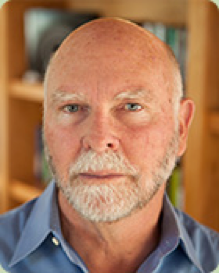Collaborating with J. Craig Venter Institute
One of the best parts of my joint internship with J. Craig Venter (JCVI) and the Smithsonian Science Education Center (SSEC) is the hands-on learning experience I’m getting at JCVI. So far, I’ve learned several basic laboratory skills like volumetric measurements, proper use of balances including selecting the correct balance, record keeping using a lab notebook, and the ever-important laboratory safety and aseptic techniques. I’ve also learned several advanced techniques such as cell tissue culture, transfection using synthetic DNA into mammalian cell lines, how to use a hemocytometer – a device used to count cells – setting up a polymerase chain reaction (PCR), how to make and set-up an agarose gel electrophoresis, and nucleic acid gel imaging and documentation using UV florescence all of which are typical for the work conducted at JCVI. I will explain each of these techniques in more detail over the next several weeks. But first who is J. Craig Venter and why is there an institute named after him?

John Craig Venter, Ph.D., is an American born biochemistry-geneticist and science superstar. Dr. Venter served in the US Naval Medical Corps during the Vietnam war, has worked in academia as a professor of pharmacology and therapeutics at the State University of New York at Buffalo, and served as section chief at the National Institute of Neurological Disorders and Stroke at the National Institutes of Health (Shampo & Kyle, 2011). Dr. Venter is also the founder of several organizations focused on genomic research including JCVI, a multidisciplinary research facility located in Rockville, Maryland and La Jolla, California.
JCVI is a world leader in genomics with programs focused on improving understanding in areas of genomic medicine, infectious disease, microbial and environmental genomics, synthetic biology, and informatics. Researchers at JCVI boast a set of unrivaled accomplishments including: the first draft human genome, the first complete diploid human genome, the first human microbiome and environmental genomics programs, new and improved methods for isolation and detection of infectious diseases agents, construction of the first synthetic cell, and construction of the first minimal cell. JCVI continues to push boundaries of genomics to positively impact our world.
Amidst the plethora of research taking place at JCVI is the policy center. JCVI understands there is a great responsibility that comes with scientific and technological advances. The goal of the policy center is “to help decision makers understand and anticipate the impact of 21st century biology, and where appropriate, devise policies to enhance positive and avoid negative societal outcomes” (“JCVI: Research / Groups / Policy Center,” n.d.). JCVI is not only committed to revolutionizing the world of biology through genetic research, their commitment extends to the general public both here in the US and throughout the world.
Could you imagine how amazing such an experience has been for a Pubic Health Science graduate craving laboratory experience?
I am honored to be apart of the work taking place at JCVI. As I continue to learn more laboratory skills and improve on the ones previously mentioned, I hope my experience will help guide the work being done at SSEC with their Mosquito Curriculum Module. I also hope my education in public health will allow me to translate the science so children around the world will be able to understand how they can ensure health for all in their local community from mosquito borne diseases. Most of all, I hope my experience will inspire others to learn more about the wonderful awesome world of science.
